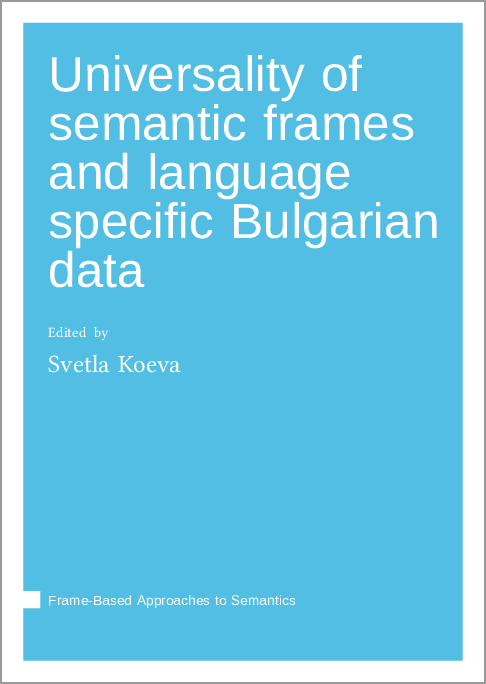We log anonymous usage statistics. Please read the privacy information for details.
Universality of semantic frames and language specific Bulgarian data
Synopsis
The book Universality of semantic frames and language specific Bulgarian data is devoted to the principles of data organisation in the Bulgarian FrameNet, which has been in development for more than 20 years and has gone through various phases. Originally it was developed as an independent resource, but for about fifteen years it has been correlated with the Berkeley FrameNet, observing the following basic principles: The information in the FrameNet that is relevant for the description of Bulgarian is considered language-independent (e.g. definition of frames and relations between them, definitions of frames and elements and relations between them, etc.) and is automatically transferred into a structure called a superframe. For each superframe, there may be one or more Bulgarian frames in which the language-independent information is restructured, if necessary, so that it corresponds exactly to the description for the Bulgarian language. The Bulgarian verbs of communication, change, movement, contact and emotion are described in more detail, their subclasses are delineated and the similarities and differences in the semantic and syntactic description for Bulgarian and English are compared and discussed. It is shown how the semantic frames can be used in an experiment to assess children's mastery of semantic conceptualisation and syntactic use of verbs from their basic vocabulary. These and a number of other applications: automatic assignment of semantic roles, automatic recognition of events in news, automatic recognition of scenes in images and videos are some of the applications in which the Bulgarian FrameNet can be used. In addition, the semantic and syntactic information in the Bulgarian FrameNet can be used for theoretical considerations, including comparative studies focussing on the modern state of the Bulgarian language and other languages for which a FrameNet has been developed.
Chapters
-
Universality of semantic frames vs. specificity of conceptual frames
-
Language-independent and language-specific properties of semantic descriptionA case study on verbs of communication
-
The complex conceptual structure of verbs of change
-
The conceptualisation of the routeNon-directed and directed motion verbs in Bulgarian and English
-
Frame semantics and verbs of contact
-
Frame semantics and verbs of emotion
-
Basic verb vocabularyAn empirical approach to argument structure and word associations




